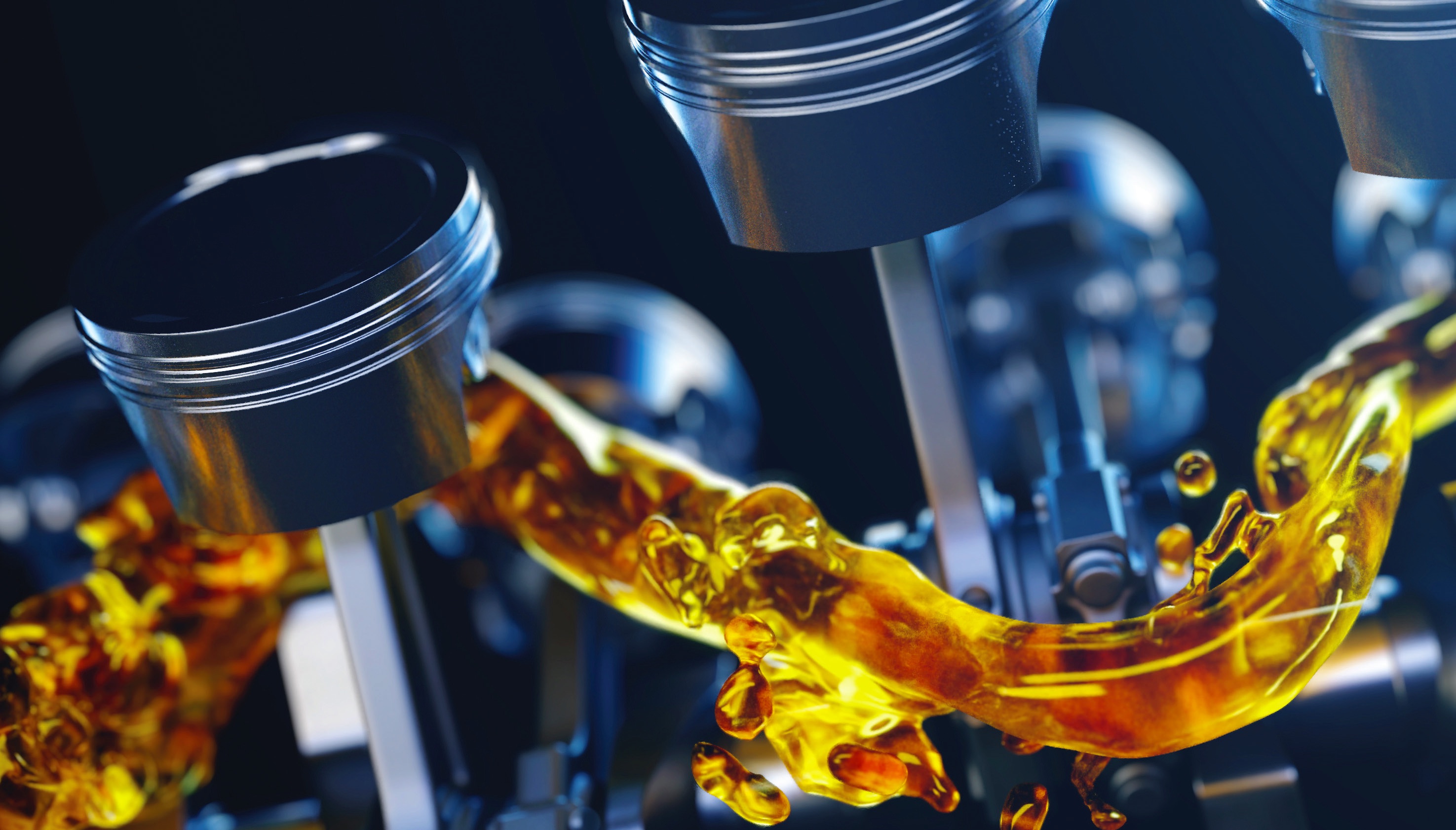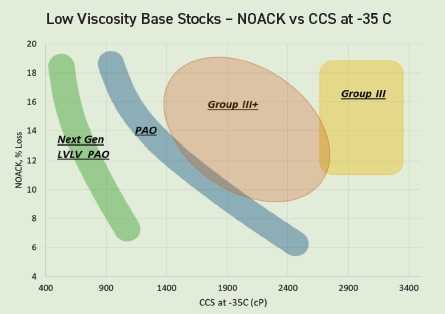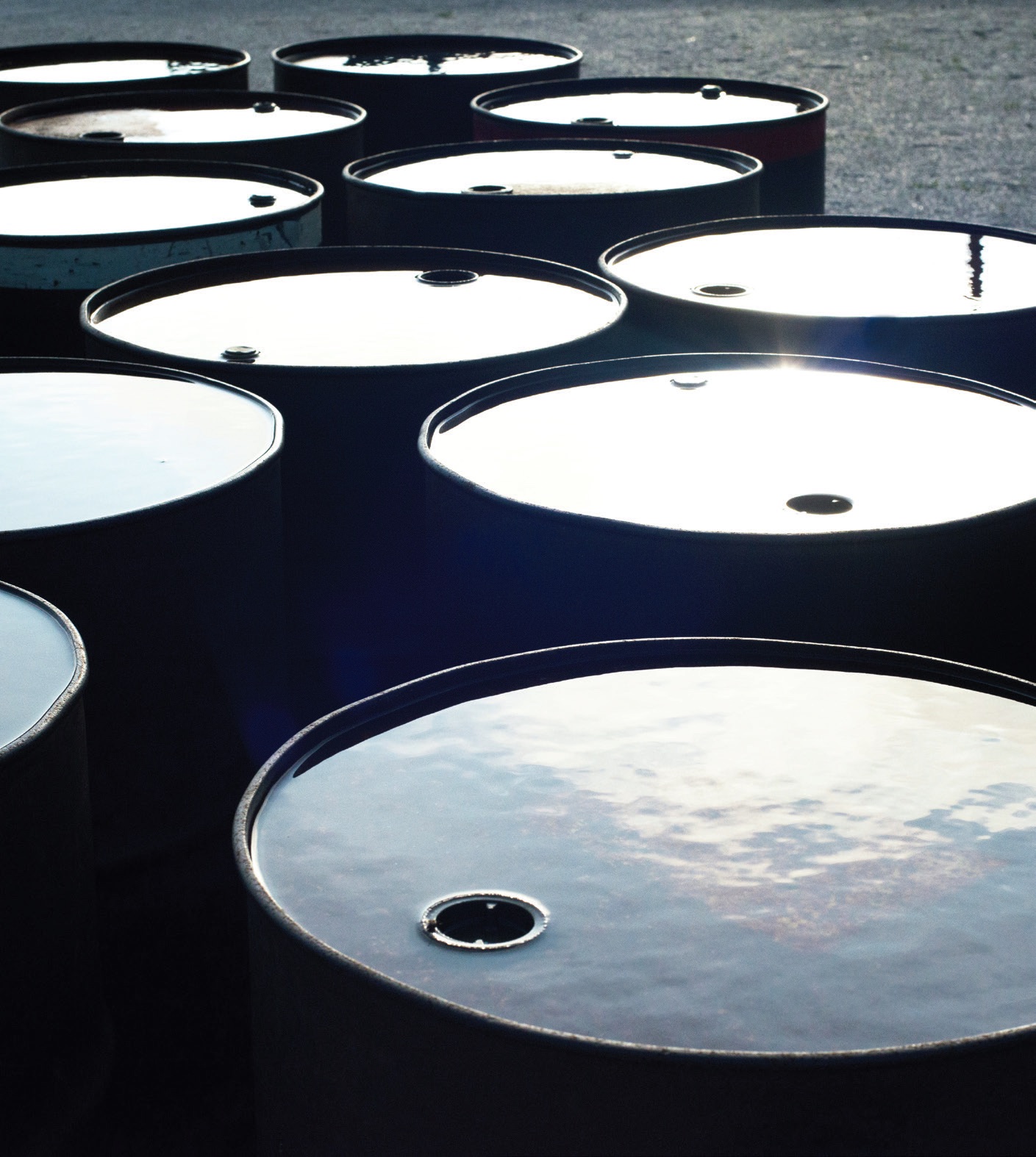The bright future for PAOs
Jeanna Van Rensselar, Senior Feature Writer | TLT Cover Story February 2021
Ever increasing fuel efficiency requirements, environmental regulations and resulting performance demands are being met by PAO manufacturers.

KEY CONCEPTS
•
PAO developers are making significant investments to meet the current and projected demand.
•
PAO developers also are rolling out new technologies for new requirements.
•
Although the COVID-19 pandemic created a few interruptions, the long-term projection for PAOs is strong.
There is no doubt that the demand for polyalphaolefin (PAO) base stock is increasing and has been for decades. What’s different in recent years is the introduction of high viscosity metallocene PAOs (mPAOs) that mitigate the few shortcomings of PAOs.
Three major suppliers of PAO base stock are ExxonMobil Chemical Co., INEOS and Chevron Phillips Chemical. Other suppliers include LANXESS and Naco (China).
PAOs are 100% synthetic, nearly 100% pure, nonpolar polymers that are created by polymerizing alphaolefins. The American Petroleum Institute has designated them as Group IV. And they have many benefits over Group I, II and III base stocks.
PAOs provide superior lubrication performance over wider operating and temperature ranges than mineral-based oils, are usually less volatile and have good lubricity in metal-to-metal applications. Greases with PAO base oils are less prone to water washout and creep.
They also exhibit excellent oxidation resistance—no points on the hydrocarbon chains that tend toward oxidation. PAOs have higher viscosity indexes (VIs) and require fewer viscosity improving additives (which also reduces shearing).
Because PAOs do not contain waxes that readily form crystalline structures, they have better cold flow properties—keeping the pour point exceptionally low. They can yield longer drain intervals because of reduced volatility and better oxidation, thermal, molecular and additive package stability.
STLE Vice President Dr. Ken Hope, global PAO technical services manager, Chevron Phillips Chemical, says, “PAOs are well known for their excellent low-temperature viscometrics, oxidative stability, Noack volatility,
1 low pour points, thermal conductivity and also food-grade properties. The reduction in the coefficient of friction and the low Noack volatility have become very important for low-viscosity lubricants targeting energy efficiency advantages. However, there are many different types of base oils and reasons for each. The plethora of lubricant applications across the globe requires a significant array of specific base oil properties.”
According to STLE Fellow Jack Zakarian, formerly with Chevron Lubricants and now a consultant for JAZTech Consulting, LLC, the breakthroughs in PAOs involve the manufacturing process, which has led to better performance. “There were two recent advances: one involves high viscosity (mPAO) and the other involves ultra-low viscosity PAO (low-viscosity, low-volatility, LVLV),” he says. “This is PAO that has the ability to self-assemble under high pressures, thereby reducing fluid friction. This new PAO has lower volatility compared to conventional PAO, which is a big advantage in engine oil formulations.”
Hope adds, “The mPAO-based technology represents a considerable change in technology away from the traditional high viscosity polymerization that has been used since the 1980s.”
Metallocene PAO
For the last decade or so, there had been growing demand for PAO base stocks with extended drain intervals, better temperature performance, increased durability in the most severe conditions and—most importantly—improved energy efficiency.
The answer was mPAO technology. It involves the use of metallocene oligomerization catalysts that yield products with higher kinematic viscosity and a much narrower molecular weight distribution—enabling precision properties for discrete end-products and their applications.
When compared with conventional Group IV base stock, the general benefits of mPAOs include:
•
Improved shear stability for product durability and long drain intervals.
•
Improved Brookfield viscosity
2 and lower pour point improve low-temperature viscosity and, thus, cold-start performance.
•
A higher VI for excellent performance across a wide range of temperatures.
•
Better air release and foam properties.
Metallocene high-viscosity PAO is produced by major suppliers. Applications for mPAOs include auto, truck and stationary engine oils, multigrade gear oils, wind turbine lubricants, compressor lubricants and greases.
“All of the major producers use the metallocene process,” Zakarian explains. “The migration is slow because of the time and cost involved to reformulate and reapprove products. Given the performance advantage, I would say that the metallocene process is preferred.”
“There are many benefits for the mPAO products over traditional high-viscosity PAOs,” Hope says. “Most notable are the low pour point, very high VI and excellent low-temperature viscosities. Other important features include the reduction in the ability to generate and stabilize a foam, oxidative stability, air release and shear stability.”
Zakarian observes, “The market has been slow to take advantage of metallocene products. The reason is the time and cost involved to reformulate current products. However, over time, I expect that nearly everyone will migrate to the better performing product.”
ExxonMobil agrees that market acceptance of metallocene high-viscosity products will continue in both conventional and metallocene products and is committed to both platforms.
The demand for PAOs
PAO demand has grown in recent years. Hope explains, “Several factors have contributed to this growth, including the need for better performing engine oils that lead to lower CO
2 emissions and higher performing lubricants for industrial equipment. This leads to lower maintenance costs and improved efficiency.”
Kerrie-Anne Lanigan, vice president, synthetics, ExxonMobil Chemical Co., says, “PAO demand is influenced by the health of the macro economy and the state of the global transportation market. In 2019, PAO demand was impacted somewhat by a global economic slowdown and low-viscosity PAO, in particular, also was affected somewhat by Group III and Group III+ products.
3 Obviously in 2020, PAO demand has been impacted due to the COVID-19 pandemic.”
Lanigan continues, “COVID-19 brings a high level of uncertainty, which makes near-term demand projections very challenging. Whether demand effects due to COVID-19 are temporary or longer lasting is an open question. Additionally, while Group III+ has continued to increase penetration in some low-viscosity applications, overall PAO demand continues to remain strong due to superior performance attributes in many applications.”
Zakarian observes that the increased demand for PAO is coming at the expense of other base oils—although there has been a modest upsurge in both Group III and Group IV demand in recent years. “The demand for Group III and Group IV is driven by fuel economy and emission reduction mandates,” he explains. “In addition to reducing friction and having a wide operating temperature range, Groups III and IV also give excellent oxidation stability, which allows for longer drain intervals.”
Lanigan agrees that demand is driven in large part by environmental concerns and regulations. “Longer term, we expect that increasingly stringent regulations will continue to aggressively drive the industry toward improved energy efficiency, fuel economy and reduced emissions, and this, in turn, will continue to drive demand growth for synthetic PAO base stocks,” she says. We believe that PAO demand growth will persist, but to deliver the needed improvements in energy efficiency, fuel economy, emissions and durability, formulators need support to overcome the challenges posed by next-generation lubricant requirements.”
Lanigan adds, “In terms of technology, formulators will need new base stocks in order to meet future fuel economy targets.” The next-generation LVLV PAOs offer much lower viscosity, lower volatility and higher oxidation resistance versus conventional low-viscosity PAOs and versus Groups III products. Lanigan continues, “These ‘step out’ LVLV PAO products can help formulators meet the challenging requirements in future engine, transmission, axle and gear oils (
see Figure 1).”
 Figure 1. Low-viscosity base stock comparison. Figure courtesy of ExxonMobil.
Figure 1. Low-viscosity base stock comparison. Figure courtesy of ExxonMobil.
How PAO developers are meeting the demand
There has been a significant amount of recent and future production expansion announced by the major suppliers for both linear alphaolefin (LAO) and PAO (
see LAO base stock). “This is very good news for lubricant marketers who, at times, were tightly constrained on PAO availability,” Zakarian says. “If all of the announced projects are built, there actually could be a surplus of PAO on the market.”
LAO base stock
Linear alphaolefins (LAOs) are synthetic hydrocarbon liquids produced by the polymerization of ethylene, H2C=CH2. As the name implies, LAOs have a linear structure with a double bond (olefin) at the end of the chain. This makes them more biodegradable than other olefins. LAOs are remarkably varied. They can be customized to individual specifications—making them attractive for new chemical development. They are highly pure and used in applications that include high-performing engine/industrial oils, specialty chemicals, waxes, surfactants and plastic packaging.
Chris Hausler, global business manager, PAO, Chevron Phillips Chemical, says, “We do believe that the growth is sustainable as a result of investments that have been made in recent years to increase PAO supply capacity, and it is our belief that the industry will continue to invest to keep pace with demand.”
He continues, “The industry has added additional feedstock and PAO capacity to support increasing demand. We debottlenecked one of our PAO production facilities a few years ago to increase our production capacity and provide security of supply to our customers.”
Into the future
Zakarian is convinced that PAO is the gold standard for a hydrocarbon base oil. “The comparison to Group III is very dependent on what performance properties you need to meet,” he says. “For many products, Group III will pass specifications, and it is preferred because of lower cost. If you cannot pass specifications, then PAO becomes the obvious choice. The biggest advantage for PAO will occur in SAE 0W motor oils that have very low viscosity, such as 0W-8, 0W-12 and 0W-16.”
 New vehicle technology will have a mostly positive effect on the PAO market.
New vehicle technology will have a mostly positive effect on the PAO market.
ExxonMobil is optimistic about the future of PAOs. “The global trends favoring reduced emissions, improved fuel/energy efficiency and durability will become increasingly important as new regulations continue to be announced and become more stringent,” Lanigan says. Lanigan also feels confident the world will need unique step-out base stocks like the next-generation LVLV PAO base stocks.
Lanigan also believes new vehicle technology will have a mostly positive effect on the PAO market. “When thinking about future trends, it is important to consider the effect that vehicle electrification might have on automotive lubricants,” she says. “In the future, we see potential demand upside in new EV applications such as heat transfer fluids and multipurpose fluids. However, we’re also monitoring the rate and pace of vehicle electrification and its impact on the conventional internal combustion engine (ICE) fleet.”
Hausler also expects that the market for PAOs will remain strong. “We do expect this trend to continue as countries around the world look for sustainable solutions that help to reduce CO
2 emissions and manufacturers look to optimize efficiency of their equipment and reduce maintenance costs,” he says. “We believe PAOs are a valuable group of products that can provide environmental and sustainability benefits, equipment efficiency improvements and cost savings when formulated into finished lubricants.”
Hope concludes, “As technical requirements continue to become more difficult to achieve, formulators will continue to be challenged to meet those with new and existing technologies. We feel PAOs offer considerable advantages and can help meet these emerging challenges. We continue to find new applications due to changes in our societal needs, and PAOs continue to contribute to lubricant solutions.”
REFERENCES
1.
The Noack Volatility Test indicates lubricant evaporation loss in high-temperature operating environments.
2.
Brookfield viscosity measures fluid viscosity at given shear rates.
3.
Premium Group III base stocks with VI levels in excess of 130 are occasionally marketed as Group III+, which is not recognized as an official category by the American Petroleum Institute.
Jeanna Van Rensselar heads her own communication/public relations firm, Smart PR Communications, in Naperville, Ill. You can reach her at jeanna@smartprcommunications.com.